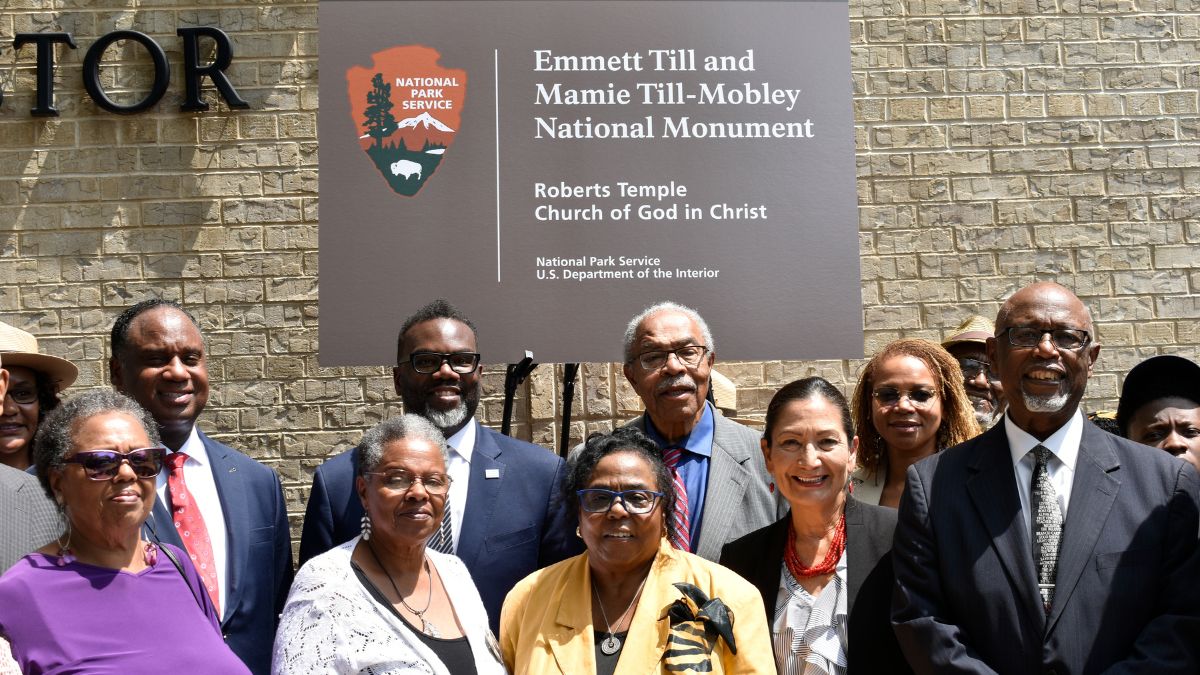By Secretary of the Interior Deb Haaland and National Park Service Director Chuck Sams
As the first Native American cabinet secretary and leader of the National Park Service, we know all too well that the stories of underrepresented and historically marginalized communities have often gone untold. When they are told, efforts to elevate these stories – and include the voices of those who lived through them – have traditionally been underfunded and under-resourced.
The Biden-Harris administration has been focused on ensuring that national parks and historic landmarks are places not just for visiting, but for learning, inspiration and healing — living classrooms that teach us about resilience, diversity and the enduring spirit of America. We are matching our words with action, and nowhere is that more pronounced than in Illinois.
In August, President Joe Biden established the Springfield 1908 Race Riot National Monument as America’s newest national park site. The national monument will preserve historic objects associated with the violent, racially motivated riot in President Abraham Lincoln’s hometown that served as a catalyst for important steps in the civil rights movement, including the formation of the National Association for the Advancement of Colored People (NAACP).
The designation is the eighth national park created during the Biden-Harris administration and follows the President’s designation of Emmett Till and Mamie Till-Mobley National Monument in Chicago and Mississippi. Established on what would have been Emmett Till’s 82nd birthday, the Emmett Till and Mamie Till-Mobley National Monument includes places that were central to Emmett Till’s racially motivated murder, the acquittal of his murderers and the subsequent activism by his mother, Mamie Till-Mobley, that helped catalyze the Civil Rights Movement.
The Department of the Interior has a mission to steward and protect America’s treasured places. But it also has a responsibility to tell the story of America, using the power of place. In the past three years, we have made significant strides toward telling a more complete and inclusive story — one that honors the voices and experiences of all who have and continue to call this land home.
We’re fully committed not just to preserving landscapes and buildings, but to recognizing the rich narratives that shape our national identity. These recent additions reaffirm that America’s story – even when difficult – can help us learn from the past in order to build a more just and equitable future.
We’ve also worked to ensure that Americans from all backgrounds are appropriately represented in the National Park System, as well as in National Historic Landmarks and the National Register of Historic Places. Illinois is home to many such destinations, such as Pullman National Historical Park, which tells the story of Black railway porters and the first major labor agreement between a company and a Black union.
Since 2021, the National Park Service has invested more than $38 million in infrastructure and preservation projects for parks that commemorate women, and we’ve undertaken important work to guide us in how best to share the story of Latino heritage, LGBTQ history, and Indigenous life.
We are also making an impact beyond the parks — helping states, Tribes, local governments, and nonprofit organizations conserve and preserve historic buildings, places and resources in their own communities.
Historic preservation grants have funded $607 million since 2021 to preserve cultural resources and historic places in underrepresented communities, rural areas, and at historically Black colleges and universities, as well as sites key to the representation of Tribal heritage, African American civil rights, the history of equal rights in America, and the nation’s founding. This includes $750,000 for the rehabilitation of the historic Peoria Women’s Club in Illinois. Built in 1893, it is the second oldest women’s club in the nation.
As we prepare to celebrate the country’s 250th anniversary in 2026, it’s vital that everyone who calls this land home be able to see their stories reflected in our national parks and historic places, from the landscapes we protect to the stories we share.
We invite all Americans to engage with these stories, to explore the diverse narratives that shape our national identity, and to become active participants in the stewardship of our shared heritage. In addition to Illinois’ two new national monuments, there is much to explore.
With more than 430 national parks across the country and in every state, there’s likely one closer than you think.
Together, we can continue to ensure that our national parks, landmarks, historic sites and cultural resources reflect the richness of our collective experience and inspire future generations to cherish and protect these irreplaceable treasures.




